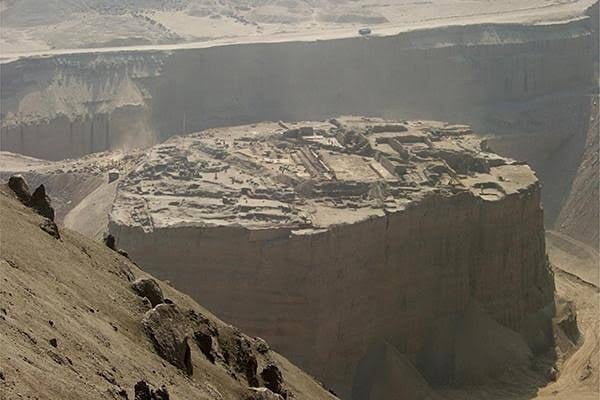In another place in space-time.
On the last planet a slight
breeze slides, very soft and constant. That air caresses the vast deserts like
the listless arm of a lover who disdainfully touches the sad landscapes and the
cold stones, which, in general, have no other witness to their existence.
At the top of the atmosphere, just before
the start of nowhere, thousands of melancholic clouds, softly luminescent,
weave a circular storm. This great spot revolves around the hemispheres of the
planet every 24 hours, providing little light for half of that time and leaving
the other in darkness. Eventually, among the deserts there is some deep moat
from which monstrous columns of dense gas rise amidst thunder. By observing
them patiently, I have witnessed that finally those columns of gas - made at the
bottom of the avernus - feed the
great luminescent storm, the only protagonist of our synthetic atmosphere.
Here and there you can
find, spented Mekhanes[1],
millenary artifacts of public bio-maintenance, used for an eternity by the
lonely who are being born and dying, from century to century, on the last
planet. These Mekhanes prevent my
almost dry blood from flowing. Or they leave between my tissues microsystems
that fill my skinny flesh with little, although enough, oxygen. But, above all,
they are repairing the errors and micro-aberrations that my germ molecule[2]
is suffering, which is the most essential thing that I have and that I am.
Every so often the Emissary leaves
instructions. Through them I know how to find and use these Mekhanes or when to start new operations
on them. The Emissary is the interface between the Mekhanes and me, and they are the distant manifestations, the poor
echoes of the Thecnetos, which thus allows my survival.
Among the deserts can be found some
landscapes even rarer than others: they contain geometric shapes and orderly
beauty. I suppose they are distant constructions, traces of the distant and
violent prehistory of the human being, which happened so long ago that perhaps
the same time does not serve to conceive the distance from us to them. They are
now remote dust, fading into even older dust, and yet they seem so interesting
to me when I compare them to the meaninglessness of the other landscapes. They
speak of our fiery ancestors, too different from us.
I had never been outside the local ruin
system and studying it was my only distraction, but my walk through it was
always lonely. Trillions of years ago, all forms of life failed, except, of
course, ours, which will last until the end of the universe. And there is still
the possibility that, if some form of matter or energy survives to that end,
the Thecnetos will find a way to make us survive as well.
I
must admit that these ruins are confusing or sometimes totally incomprehensible
to me. I can't imagine how they ever served that remote humanity or what role
they played in that strange past world. The phrase "everything was very
different then", which could be used to answer this question, does not
alleviate my doubts, my deep and anxious doubts.
I walk and examine them patiently and
they always seem to make no sense, or could it be that they never did, at least
not to us? (Which is evidence that in prehistory we were not physically like we
are now). Perhaps they correspond to periods of disorientation or drastic
change, or they belong to the beginning of the automaton control of the world,
of the ancestors of the machines that came later, since the artificial also has
its prehistory, too different — surely — to the current Thecnetos.
If I think about it better, the artificial
will also have its future, but not us, because we will not change anymore. Our
evolution as a species came to an end long ago.
These rare ruins, those stone and cement
algebras, were perhaps the war trenches of the first artificial intelligences;
the primitive and crude seed of the actual, absolute and infallible Thecnetos.
The Emissary, his
Emissary, i think, have to understand them better.

No hay comentarios:
Publicar un comentario